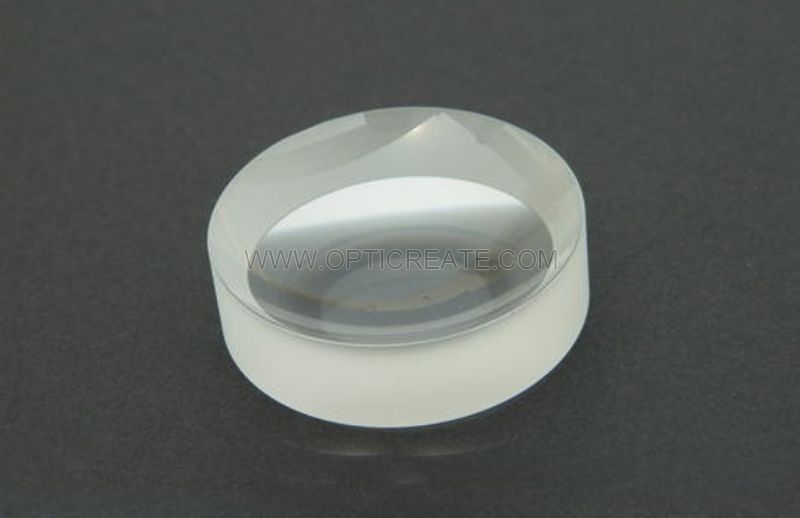Company News

Today Spherical Lens Supplier introduces a kind of lens-biconcave lens among the lenses.
A biconcave lens is similar to a plano-concave lens, with a negative focal length, but the light rays that are incident in parallel diverge outward. The two sides of the biconcave lens have the same radius of curvature. They are generally used for beam expansion and projection.

Bi-Concave Lens
The principle of Bi-Concave Lens:
The geometric mapping of biconcave lenses is the same as that of convex lenses. From the top of the object, it also acts as two straight lines: one parallel to the main optical axis and deflected into divergent light after passing through the biconcave lens, returning this refracted light to the main focus in the opposite direction; Lines intersect at a point, this is the image of the object.
Difference between biconcave lenses and Plano-Concave Lens:
Convex and concave lenses are used for myopia; convex and concave lenses are used for reading glasses; plano-convex lenses are used for instruments or magnification; plano-concave lenses are used for instruments.
Plano-concave lenses are lenses that are concave on one side and flat on the other, while bi-concave lenses are lenses that are concave on both sides.
Uses of biconcave lenses:
The line connecting the centers of curvature on both sides is called the principal axis, and the point O at the center is called the light center. Light that passes through the center of light is not refracted no matter where it comes from. The light beam parallel to the main axis diverges in four directions after being refracted on the concave lens, and the extension lines opposite to the direction of divergence will all be at a point F on the same side as the light source. The refracted light is emitted from point F. This point is called virtual focus . There is one on each side of the lens. A biconcave lens is also called a divergent lens. The focal length of a concave lens refers to the distance from the focal point to the center of the lens. The larger the lens radius, the longer the focal length. If it is a thin lens, the focal lengths on both sides are equal.
When used in optically sparse media, it can diverge the incident beam, so it is also called a divergent lens. Because its focal length is negative, it is also called a negative lens. For thin concave lenses, the imaging formula, lateral magnification formula, and sign rule are the same as for convex lenses.
The image formed by a biconcave lens is always smaller than an object, an upright virtual image. The biconcave lens is mainly used to correct myopia. Myopia is mainly caused by the deformation of the lens, causing the light to collect prematurely in front of the retina. The biconcave lens plays the role of diverging light. The biconcave lens forms an upright, reduced virtual image, which makes the image distance longer and falls on the retina.
The above is the related knowledge of biconcave lens introduced to everyone, I hope to help everyone.
-
Optical Objective for Endoscope Repair and Maintenance
-
Rod Lens for Storz Endoscope Repair and Maintanience
-
Hysteroscpe Objective for Storz/ Stryker, etc. Endoscope Repair and Maintenance
-
Cystoscpe Objective for Storz/ Stryker, etc. Endoscope Repair and Maintenance
-
Laparoscope/ Arthroscope/ Hysteroscope Rod Lens for Storz Endoscope Repair and Maintanience
-
Arthroscope Objective for Storz/ Stryker, etc. Endoscope Repair and Maintenance
-
Window Tint Meter DB22-TM273/OEM/ODM
-
Light Transmittance Meter DB22-TM275/DB22-TM275P/DB22-TM275P6
-
Rod Lens Borosilicate Glass Rod
-
Ar Coating Bk7 15mm Plano Concave Cylindrical Lens for Imaging
-
Ar Coating Bk7 Dome Glass Lens for Underwater Protection
-
polarizer,Anomalous lens,conductive glass,seal glass,Defrosting conductive lenses
-
Super-large mirror,Super curved mirror,super spherical mirror
-
plano-convex lens,optical lens,prism,roof prism,double convex lens,concave lens
-
spectroscopeï¼ plane mirror, optical mirror
-
free-form mirror,spherical mirror, aspherical mirror, plane mirror, optical mirror
-
High-quality Optical Components Made of Sapphire And Quartz
-
High-quality Sapphire Plate With OEM Specification
-
High-quality Sapphire Tip With OEM Specification
-
High-quality Sapphire Step With OEM Specification
-
High-quality Sapphire Window With OEM Specification
-
High-quality Sapphire Windows With OEM Parameters
-
Customized Beam Splitting Optical Cube Prisms
-
Prism CMY Cube Optical Glass K9 Cubic Prism, Satellite Assembly Precision Measuring Mirror
Popular Searches
- optical mirror
- bk7 optical glass blanks
- acrylic google cardboard biconvex lens
- laser mirror
- large plastic fresnel lens
- parabolic mirror
- cylindrical achromat
- Small Lens
- angel eyes projector lens
- fly eye lens
- dielectric mirror
- optical mirrors
- laser mirrors
- Usb Lens
- laser reflection mirror
- Laser Reflective Mirror

